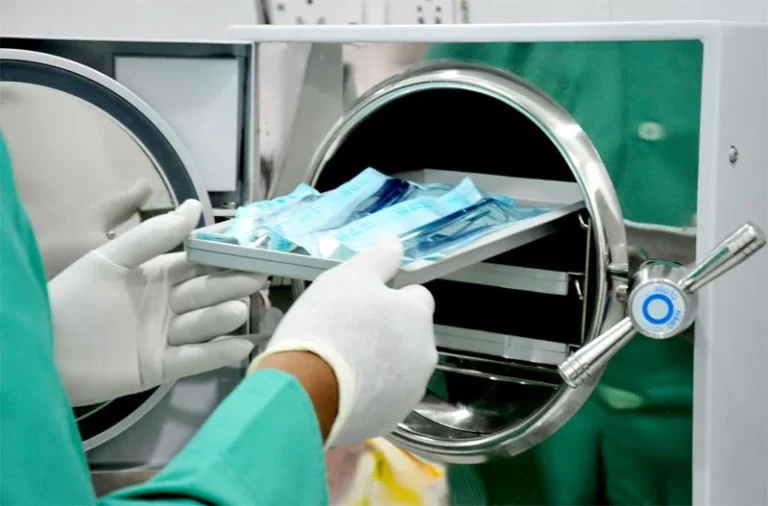Ensuring the sterility of surgical instruments, medical devices, and surfaces is paramount in medical science. Sterility prevents infections and increases the overall safety and efficacy of medical treatments. One of the most critical components in achieving this level of cleanliness is using organic solvents, which facilitate efficient extraction of contaminants. These compounds are pivotal in sterilization, ensuring that harmful microorganisms are effectively eliminated.
What Are Organic Solvents?
Organic solvents are chemical compounds that can dissolve or suspend other substances. They are primarily carbon-based molecules and include a range of substances such as alcohols, ketones, esters, and hydrocarbons.
Due to their unique properties, organic solvents are widely used in various industries, including pharmaceuticals, manufacturing, and, notably, medical sterilization. One important application of organic solvents is in the extraction process, where they help separate desired compounds from mixtures.
The Importance of Sterilization in Medicine
Before exploring the role of organic solvents in sterilization, it is essential to understand why sterilization is so vital in the medical field. Efficient extraction of pathogens is crucial to ensure patient safety and prevent infections.
1. Infection Prevention:
- Sterilization helps in eliminating pathogens that may cause infections.
- This is particularly crucial for immunocompromised patients who are more susceptible to infections.
2. Surgical Success:
- Sterile instruments reduce the risk of postoperative infections, which can dramatically improve patient outcomes.
- Maintaining a clean environment during surgery is essential for patient safety.
3. Compliance with Standards:
- Medical facilities must adhere to stringent sterilization standards set by health authorities to ensure patient safety and avoid legal repercussions.
- Regular training for staff on sterilization protocols is essential for compliance.
Role of Organic Solvents in Sterilization
1. Disinfection
One of the primary roles of organic solvents in medical settings is disinfection. Solvents like ethanol and isopropanol are commonly used as disinfectants due to their effective antibacterial properties. These compounds denature proteins and dissolve lipids in microbial cell membranes, leading to cell lysis and death.
Ethanol:
- Commonly used in concentrations ranging from 60% to 90%.
- Effective against a wide range of bacteria and viruses.
Isopropanol:
- Often used in a 70% concentration.
- Known for its rapid action and effectiveness against a broad spectrum of microorganisms.
2. Cleaning
Before sterilization, medical instruments and surfaces must be thoroughly cleaned to remove organic matter and debris. Organic solvents are instrumental in this cleaning process. Solvents such as acetone and methanol can effectively dissolve organic residues, ensuring that the surfaces are clean and ready for subsequent sterilization processes. Check the examples below:
Acetone:
- Highly effective in dissolving fats and oils.
- Used in the initial stages of instrument cleaning.
Methanol:
- Effective in removing organic contaminants.
- Often used in combination with other solvents for enhanced cleaning.
3. Sterilization Enhancement
Organic solvents can also enhance the effectiveness of sterilization methods. For instance, some sterilization processes involve gas or vapor-phase chemicals, and organic solvents can act as carriers or stabilizers for these active agents. Ethylene oxide is:
- Often used in gas sterilization.
- Effective against many microorganisms, including bacteria, viruses, and fungi.
- Organic solvents can stabilize ethylene oxide, making it more effective in penetrating and sterilizing complex instruments.
4. Solvent-Based Sterilization Methods
Some sterilization methods rely directly on organic solvents. Peracetic acid, for example, is an organic solvent used in cold sterilization. It is particularly useful for heat-sensitive instruments that cannot withstand high-temperature sterilization methods such as autoclaving. Peracetic acid is effective because:
- Effective at low concentrations.
- Rapidly destroys bacteria, viruses, and spores.
- Safe for use on a variety of medical instruments and materials.
5. Compatibility and Material Preservation
Not all sterilization methods are suitable for all materials. High-temperature methods, for instance, can damage delicate instruments. Organic solvents provide a versatile alternative that can be used on various materials without causing damage. It can be used for the following:
- It can be used on rubber, plastic, and delicate electronic components.
- Preserve the integrity and functionality of medical instruments.
- Ensure proper maintenance and regular inspections.
Safety and Handling of Organic Solvents
While organic solvents are highly effective in medical sterilization, they must be handled carefully due to their potential hazards. Proper ventilation, personal protective equipment (PPE), and adherence to safety protocols are essential to prevent accidents and ensure the safety of medical personnel. The following must be taken into account when using PPE:
- Gloves, goggles, and lab coats are essential when handling organic solvents.
- Always work in a well-ventilated area to minimize inhalation risks.
- Proper storage and disposal methods must be followed to prevent environmental contamination.
Conclusion
Organic solvents are essential in medical sterilization, disinfection, cleaning, and improving the effectiveness of sterilization. Their versatility is crucial for maintaining the sterility of medical instruments and environments and safeguarding patient health. Healthcare facilities can uphold high cleanliness and safety standards by understanding their benefits. Engaging with industry experts and staying updated on advancements in solvent technology is recommended for those seeking to enhance their sterilization techniques.
